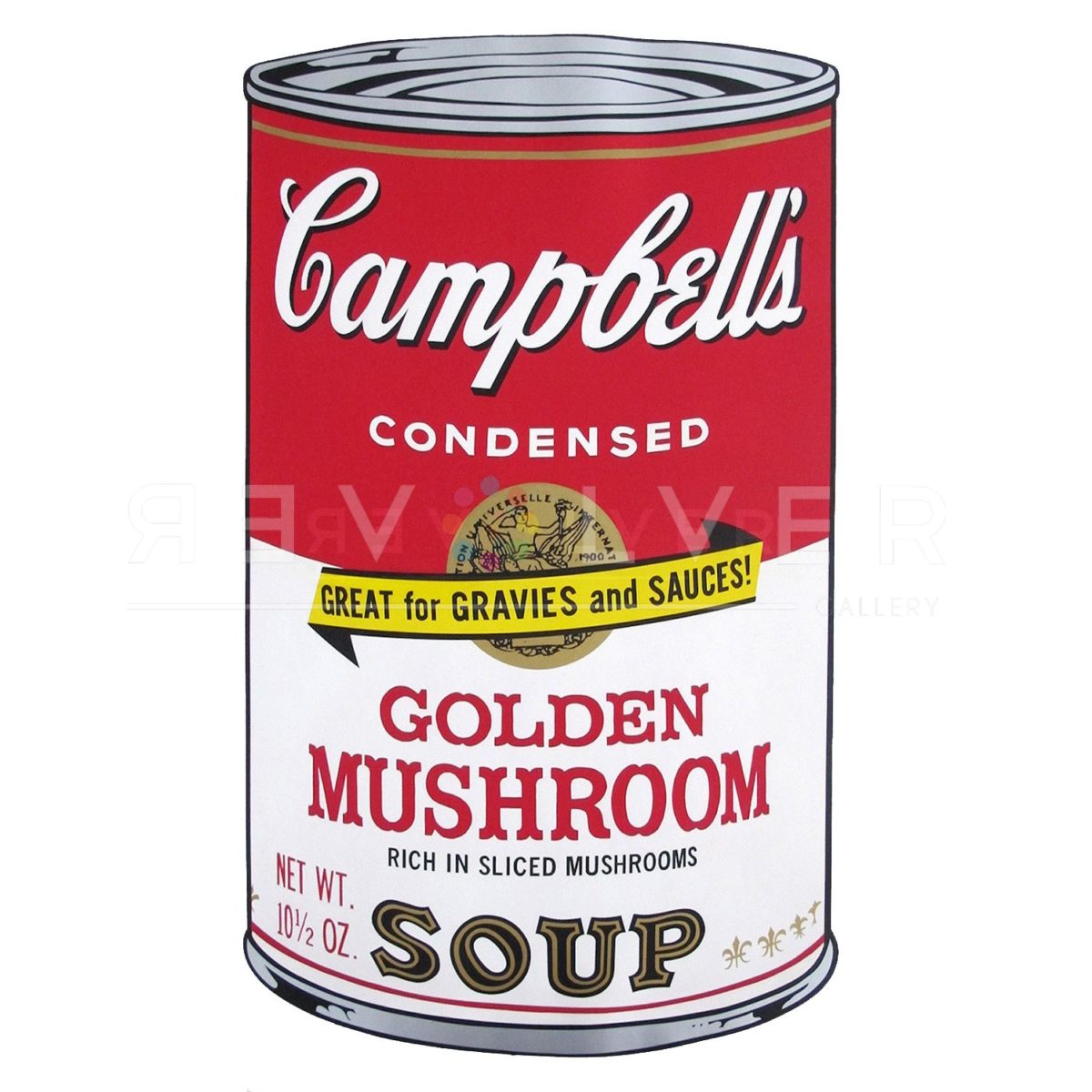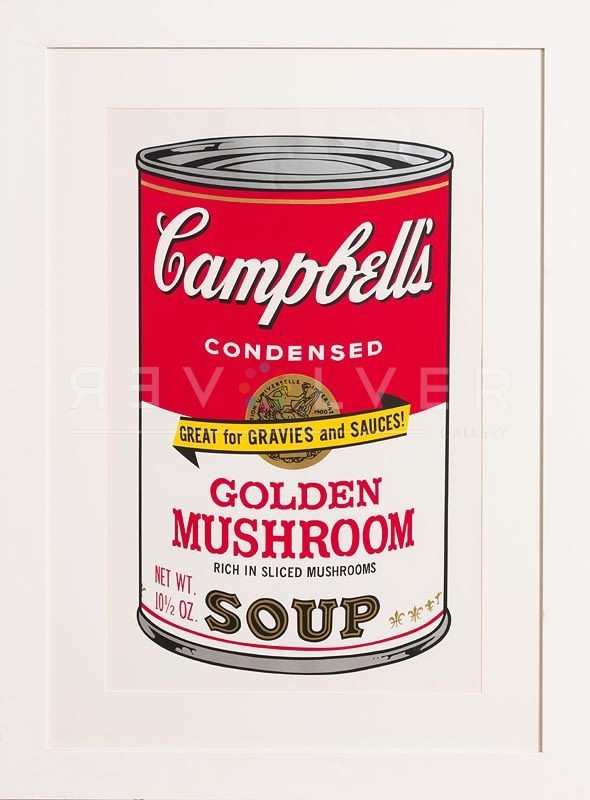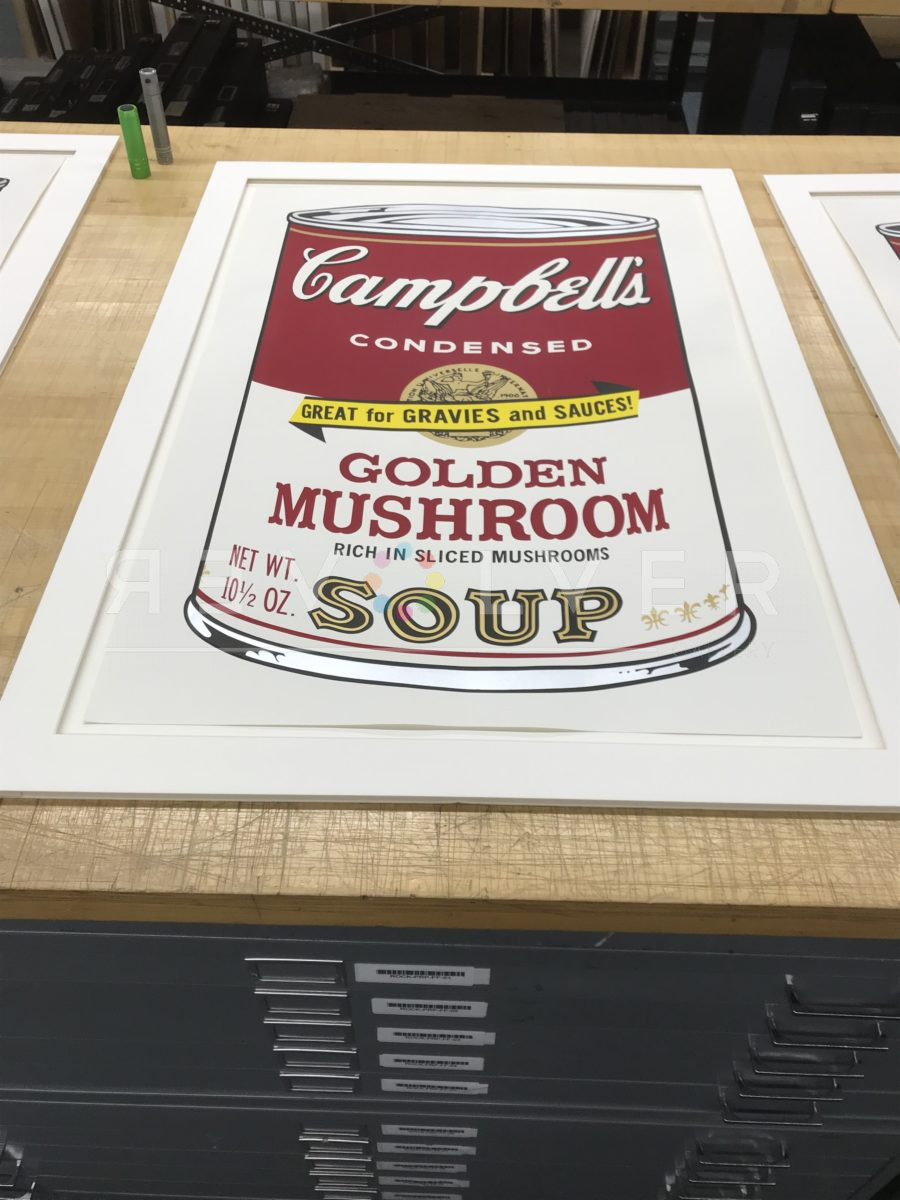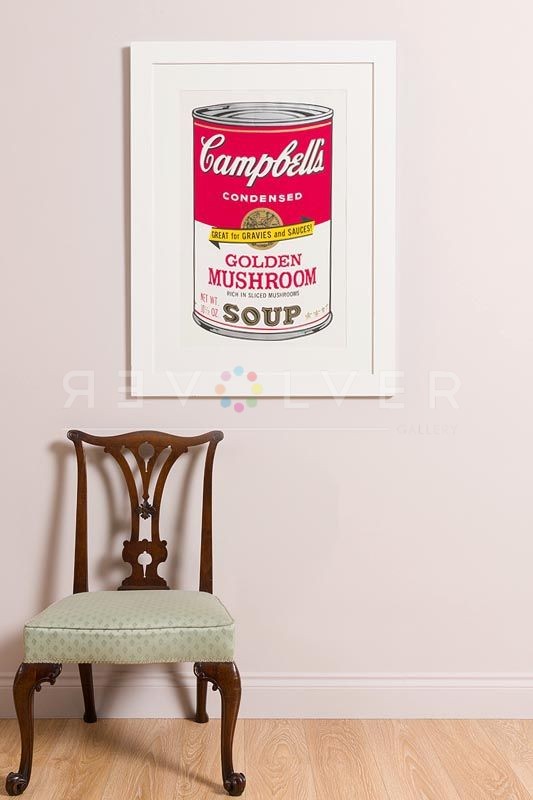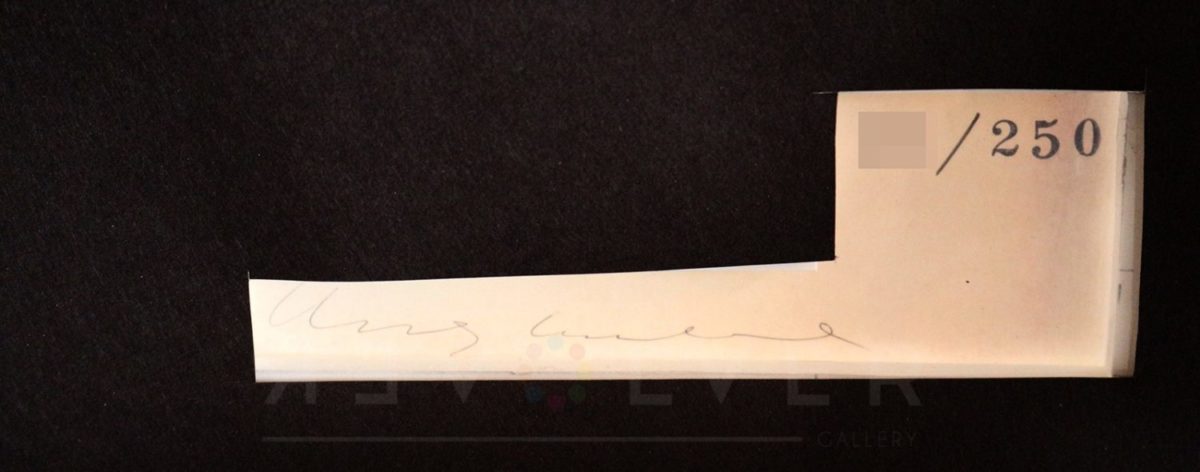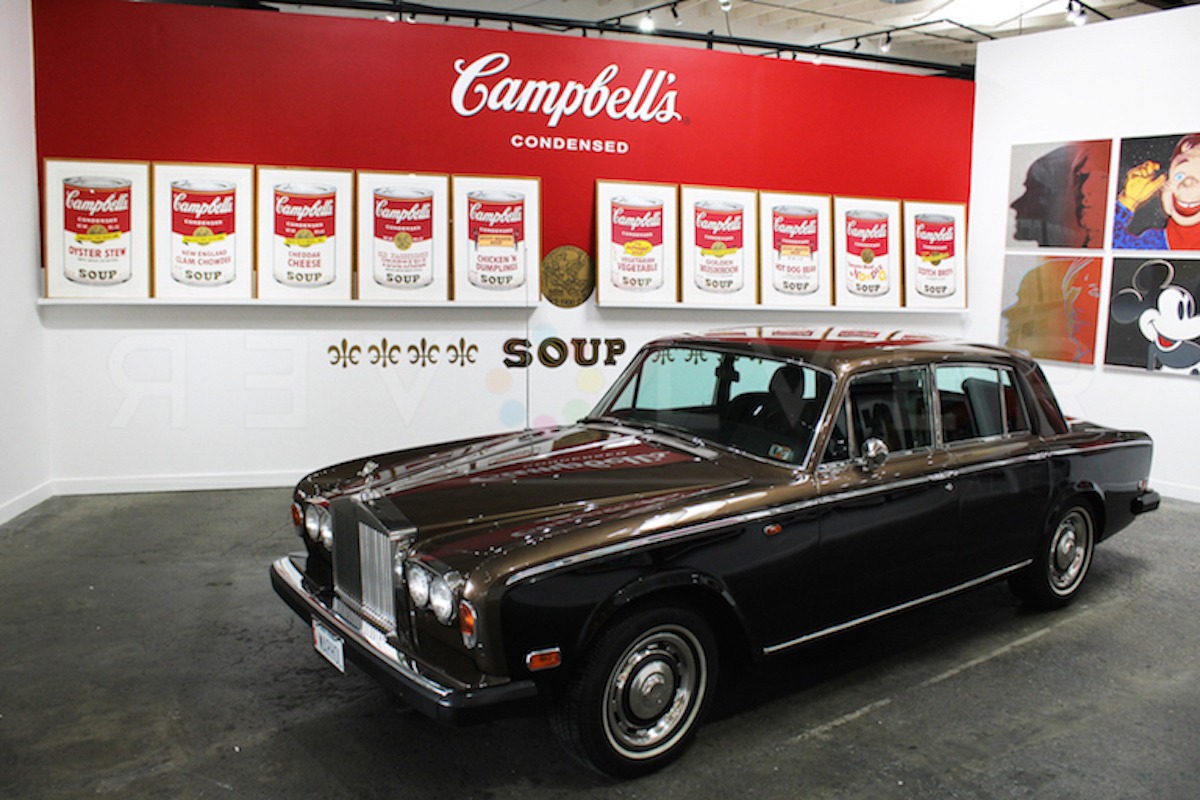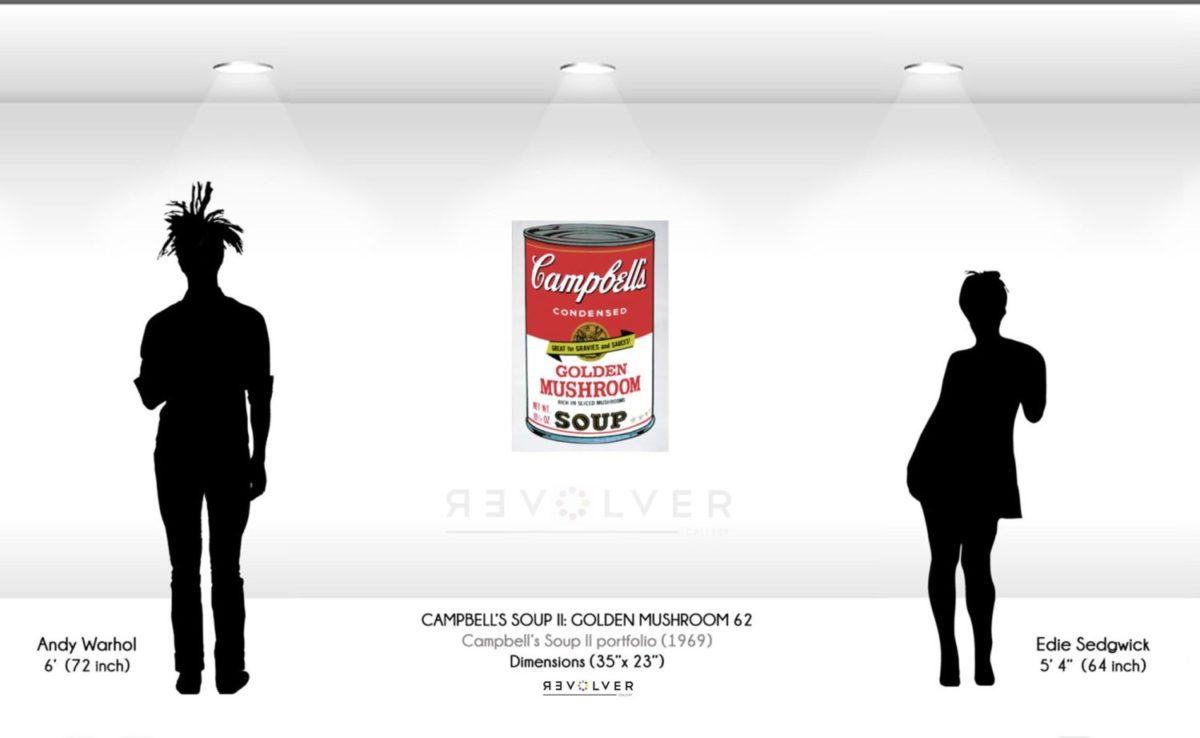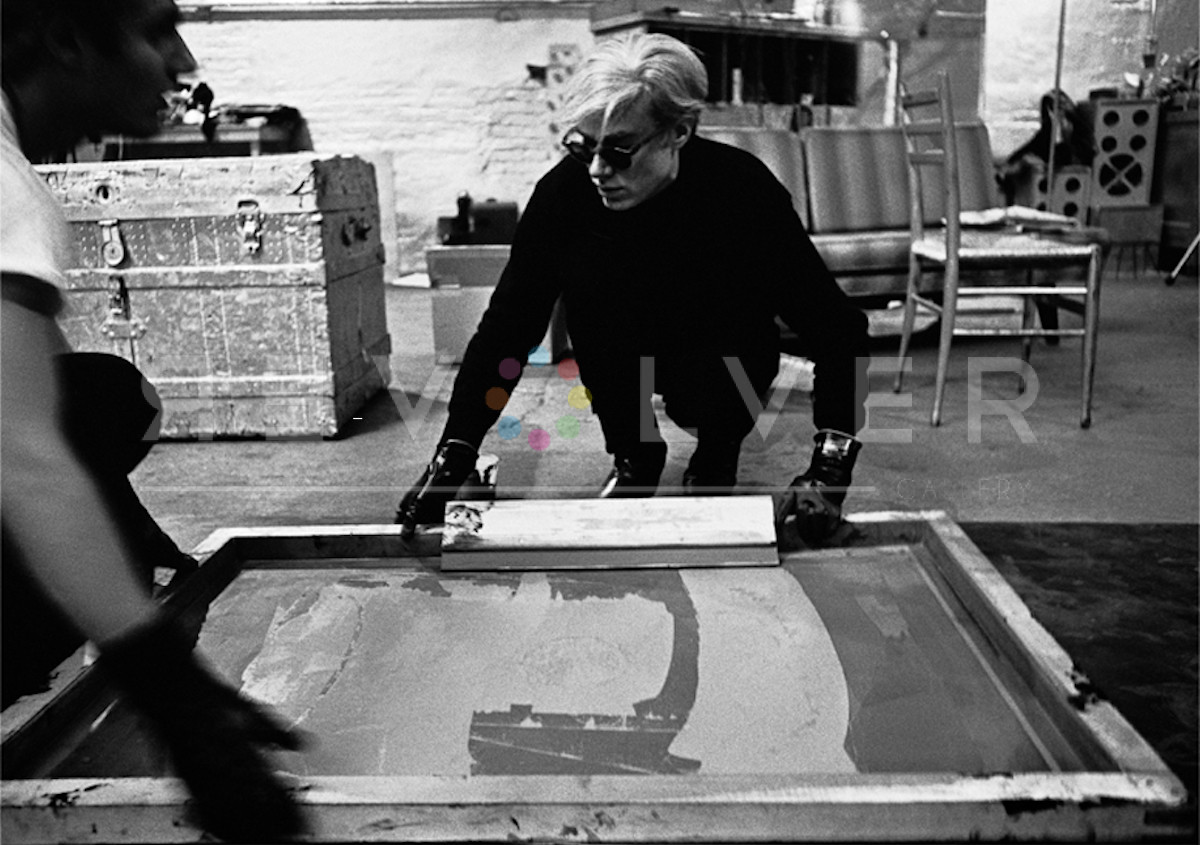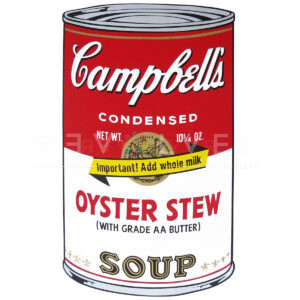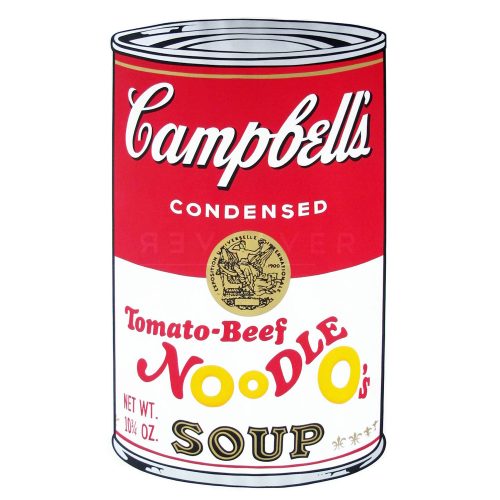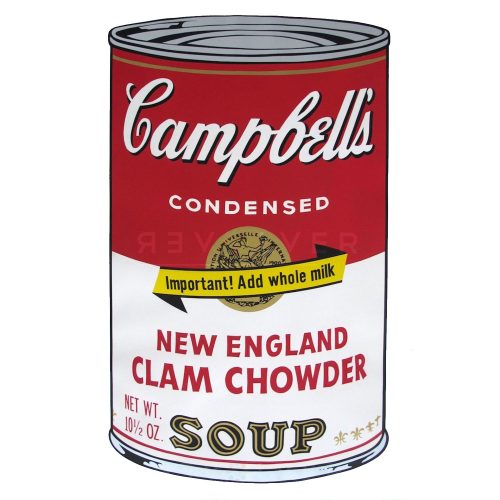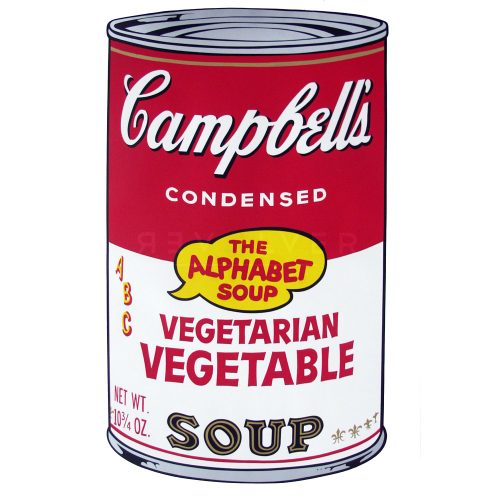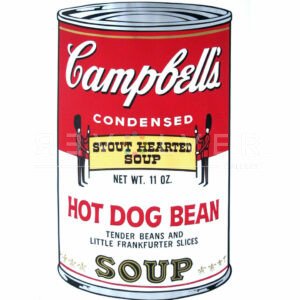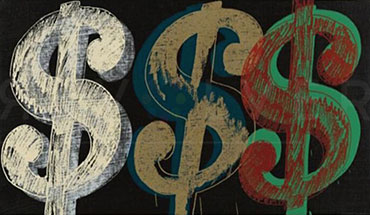Campbell’s Soup Cans II: Golden Mushroom 62 is a print by Andy Warhol included in his Campbell’s Soup Cans II portfolio from 1969. The ten prints in the series incorporate a variety of fonts and added illustrations, making them a far cry from Warhol’s original 32 Campbell’s Soup Cans. These variations attempt to imbue a more distinguishable identity upon the materially reproducible can. Moreover, the superficial alterations of the cans lent a new appeal to Campbell’s branding techniques for Warhol. The iconic color scheme of the can remains, but the alterations give each print a unique sense that betrays the label’s practical origins. These features separate the portfolio from Campbell’s Soup Cans I, in which Warhol created exact replicas of the soups. The reproducibility of the soup label reached its conclusion with Warhol’s Campbell’s Soup II portfolio in 1969.
The metamorphosis of Warhol’s pop-art depiction of the Campbell’s cans occurred during an acceleration in studies of consumer behavior. In 1969, companies like Campbell’s began adding distinguishing qualities to their products in order to occupy new places in the consumer’s mind. Warhol’s silkscreen print-making efforts mirror the evolving conditions in commercial advertising during the 60’s. The repetition of a popular image combined with superficial alterations is a defining quality seen in prints made by Warhol.
Interpretations of Campbell’s Soup Cans I & II remained highly variable. Those taking critical stances on the prints made wavering conclusions. Either the prints made a mockery of consumerism and the commodification of art, or the prints themselves should be mocked for their austerity. Nonetheless, the prevailing attitudes toward a can of soup had never been more provocative.
From his first published work in 1959 for Glamour magazine, to his 32 hand painted soup cans debut in 1962, Warhol never amassed more attention. The media wanted to understand the idiosyncratic elements of Warhol. In an interview, Warhol was asked “What is pop-art?” He responded: “Pop…is a short word for what people like at the time”. He added that the popularity of painting in a gallery depended on how much of the marble had worn off in front of the painting.
Campbell’s Soup Cans II: Golden Mushroom 62 displays a western saloon style font and yellow banner over the signature golden seal. The Old Fashioned Vegetable Soup shares a similar wild west font. Warhol also realized the assimilation of western themes into popular culture. For example, the western movie star John Wayne was given the pop art treatment in Warhol’s Cowboys and Indians series in 1986.
Amid the silkscreen prints by Warhol, the Campbell’s Soup Cans II portfolio bookends the most notable phases of his interest in the supermarket shelf. However, he would continue to use the screen printing method until the year of his death in 1987. The entry of Golden Mushroom 62 into the pop art world is imbued with qualities that go beyond the veneer of a supermarket display, yet went onto influence how one might gaze upon such a display today.
Photo Credits:
- Andy Warhol tracing Campbell’s Soup silkscreen, The Factory, New York City, circa 1965 © Estate of Nat Finkelstein © 2021 The Andy Warhol Foundation for the Visual Arts, Inc. / Licensed by DACS, London
- Andy Warhol and Gerard Malanga make a painting, 1964
Vintage gelatin silver print, 10¼ × 14¾ inches; 26 × 38 cm. Photo by Matthew Marks. - Andy Warhol, 1964. Vintage gelatin silver print, 10¼ × 14¾ inches; 26 × 38 cm. Photo by Matthew Marks.

